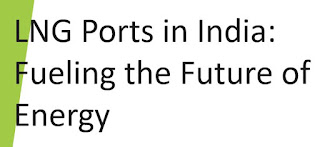Booking a container with a shipping line in India involves a systematic process that requires careful planning and coordination. Whether you're a business owner or an individual looking to ship goods, understanding the steps involved can help ensure a smooth and hassle-free shipping experience. In this guide, we'll walk you through the detailed process of creating a container booking with a shipping line in India.
Step 1: Research and Select a Shipping Line
Before you begin, research various shipping lines that operate in India and cater to your desired route. Consider factors such as their reputation, transit times, rates, and service quality. Once you've chosen a shipping line that aligns with your requirements, you're ready to move on to the next step.
Step 2: Contact the Shipping Line
Reach out to the chosen shipping line's customer service or sales team. You can contact them via their official website, email, or phone. During this initial contact, provide them with essential details about your shipment, including:
- Cargo type and description
- Container size (20ft, 40ft, etc.)
- Estimated weight of the cargo
- Origin (port of loading) and destination (port of discharge)
- Preferred sailing date or timeframe
- Any specific handling requirements or hazardous materials involved
Step 3: Receive Booking Confirmation
Upon receiving your shipment details, the shipping line will review your request and provide you with a booking confirmation. This confirmation typically includes:
- A unique booking reference number
- Details of the allocated container (container number and size)
- Sailing schedule (departure and arrival dates)
- Payment instructions, including booking fees and freight charges
Step 4: Submit Documentation
Prepare and submit the necessary documentation required by the shipping line and customs authorities. This documentation usually includes:
- Bill of lading (B/L)
- Commercial invoice
- Packing list
- Certificate of origin (if applicable)
- Any other relevant documents
Ensure that your documentation is complete, accurate, and compliant with customs regulations to prevent delays during the shipping process.
Step 5: Make Payment
Follow the payment instructions provided in the booking confirmation. This may involve paying booking fees, freight charges, and other applicable fees. Timely payment is crucial to avoid any disruptions to your shipment.
Step 6: Container Allocation
After confirming payment, the shipping line will allocate a container for your shipment. They will provide you with information such as the container number, seal number, and the terminal location where you need to deliver the cargo.
Step 7: Customs Clearances and Pre-Shipment Procedures
Work on obtaining the necessary customs clearances and approvals from relevant authorities. Ensure that your cargo complies with customs regulations and is properly documented. This step is vital to prevent any hold-ups at the port of loading.
Step 8: Deliver Cargo to Terminal
Deliver your cargo to the designated terminal within the specified timeframe. Ensure that your cargo is properly packaged, labeled, and accompanied by all required documents. Follow the terminal's guidelines for cargo acceptance and delivery.
Step 9: Cargo Tracking
Make use of the tracking tools provided by the shipping line to monitor the status and location of your shipment. This will keep you informed about the progress of your cargo and its estimated arrival time at the destination port.
Step 10: Destination Port Procedures
Once your cargo arrives at the destination port in India, arrange for its pickup or delivery to the final destination. Adhere to the procedures and regulations set by the destination port authority to ensure a seamless process.
Step 11: Clear Dues and Charges
Clear any outstanding dues, including destination port charges, customs duties, and other relevant fees. This step is crucial for the timely release of your cargo from the destination port.
Step 12: Receive Cargo and Confirm Delivery
Upon the successful release of your cargo, inspect it for any damages or discrepancies. If everything is in order, confirm the delivery with the shipping line.
Conclusion:
Creating a container booking with a shipping line in India involves a series of meticulous steps that demand careful planning, adherence to regulations, and effective communication with the shipping line and authorities. By following this comprehensive guide, you can navigate the process confidently and ensure the successful transportation of your cargo to its destination.











